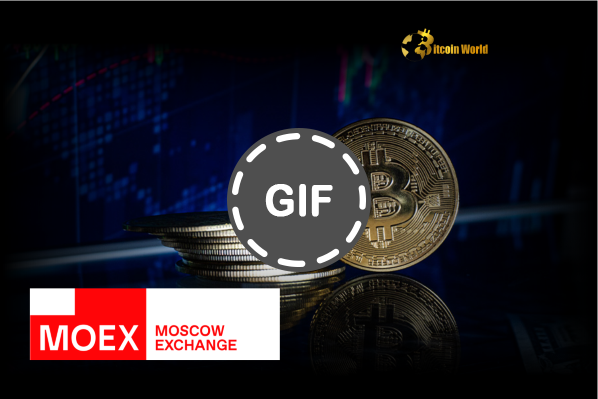BitcoinWorld

Bitcoin’s Surprising Puzzle: Why Retail Interest Lags Despite All-Time High
It’s a headline that feels counter-intuitive: Bitcoin reaches a brand new all-time high, smashing previous records, yet the typical frenzy of retail investors seems notably absent. Usually, when the price of Bitcoin soars into uncharted territory, mainstream media buzz and public curiosity explode. But this time around, things feel different. Let’s dive into the data and explore why retail interest might be lagging despite the impressive surge in the Bitcoin price.
Is This Bitcoin Rally Different? Analyzing the Data
The initial report from Odaily highlighted a key metric often used to gauge public curiosity: Google Trends. Google Trends tracks the relative search volume for specific terms over time, providing a proxy for how much the general public is searching for something like “Bitcoin”.
The data point is stark: Google Trends data shows that search interest for “Bitcoin” currently stands at a score of just 37. Compare this to the peak score of 100 recorded on Nov. 10 last year. That period represented a time of significant retail enthusiasm, fueled by a previous price run-up.
What does a score of 37 mean? It means that current search volume is only 37% of the peak search volume recorded during that previous high point. This suggests that while the price is higher than ever, the *number* of people actively searching for information about Bitcoin on Google is significantly lower than during past rallies.
This observation raises several questions:
- Is Google Trends still a reliable indicator of retail interest?
- Are retail investors simply using different platforms or methods to engage?
- Has the nature of Bitcoin ownership and investment fundamentally changed?
Why Might Retail Interest Be Muted This Cycle?
Several factors could be contributing to the seemingly low retail interest this time around, even as the Bitcoin price hits new highs. This rally looks and feels different from the parabolic surges of 2017 or even 2021.
Here are some potential reasons:
- Institutional Dominance: This rally appears heavily driven by institutional inflows, particularly through the newly approved spot Bitcoin ETFs in the United States. Large asset managers and funds buying Bitcoin might not generate the same kind of widespread public buzz as individual investors piling in.
- ETF Access: The existence of easy-to-access ETFs means traditional investors can gain exposure to Bitcoin through standard brokerage accounts. They might be searching for information about the ETF ticker (like GBTC, IBIT, FBTC, etc.) rather than searching for “Bitcoin” itself or how to set up a crypto exchange account. This could skew Google Trends data.
- Maturity of the Market: The Crypto market is more mature now. Many early retail investors already own Bitcoin from previous cycles. They might be holding, trading on existing platforms, or using different information sources rather than conducting initial Google searches.
- Fatigue or Diversion: Some retail investors might be fatigued from previous cycles’ volatility or have shifted their focus to other parts of the crypto market (altcoins, NFTs, DeFi) or even other asset classes entirely.
- Economic Headwinds: Despite the market rally, global economic conditions, including inflation and recession fears in some regions, might be dampening the average person’s willingness or ability to invest in riskier assets like Bitcoin.
- Less Media Hype (Initially): While mainstream media eventually reports on the new ATH, the initial build-up might have received less sensational coverage compared to previous cycles, which were often portrayed as wild, speculative phenomena.
Google Trends vs. Other Metrics: A Fuller Picture
While Google Trends provides a useful snapshot of initial public search interest, it’s not the only metric to consider when evaluating retail interest. A comprehensive view requires looking at other data points within the Crypto market.
Other potential indicators include:
- Social Media Sentiment and Engagement: What are people saying on platforms like X (formerly Twitter), Reddit, and Telegram? While difficult to quantify perfectly, spikes in discussion volume and positive sentiment can indicate growing interest.
- Crypto Exchange Sign-ups and Deposit Data: Are new users signing up for major crypto exchanges? Are deposit amounts increasing? This data is often proprietary but can signal retail activity.
- Trading Volume on Retail-Focused Platforms: While large volumes can come from institutions, tracking volume specifically on platforms popular with retail investors can offer clues.
- Search Interest for Specific Altcoins: Is interest simply diverted elsewhere within the Crypto market rather than focused on Bitcoin itself?
- On-Chain Data for Small Wallet Holders: Are the number of wallets holding small amounts of Bitcoin increasing? This can sometimes indicate new, smaller investors entering the market.
Currently, while Google Trends for the term “Bitcoin” is low, some other metrics *do* show signs of increasing retail activity, albeit perhaps not at the fever pitch of previous tops. The narrative of a purely institutionally-driven rally might be slightly oversimplified, but the Google Trends data point for the core term is hard to ignore.
What Does This Mean for the Bitcoin Price and Future Outlook?
The muted retail interest at this stage presents an interesting dynamic for the Bitcoin price. Traditionally, massive retail FOMO (Fear Of Missing Out) has been a significant catalyst for the final, parabolic leg of a bull run. If retail isn’t fully engaged yet, does it mean:
- More Upside Potential? Perhaps there’s a large wave of potential buyers who haven’t entered the market yet. If they eventually do pile in, it could provide further momentum for the price.
- A Different Kind of Rally? This cycle might be less about speculative retail frenzy and more about sustained institutional accumulation and adoption. This could lead to a less volatile, albeit potentially slower, appreciation.
- Increased Risk if Institutional Flow Slows? If the rally is primarily reliant on institutional buying (like ETF inflows), any significant slowdown or reversal in that trend could have a more pronounced impact if retail isn’t there to buy dips.
Understanding the balance between institutional and retail participation is crucial for predicting future price movements. The current low Google Trends score for “Bitcoin” suggests that a significant segment of potential retail buyers might still be on the sidelines.
Actionable Insights for Investors
Given this unique market environment, what should investors consider?
- Don’t Solely Rely on One Metric: While Google Trends is interesting, look at a broader range of indicators for retail interest and overall market health within the Crypto market.
- Understand the Different Market Participants: Recognize that institutional players now have a significant impact. Their motivations and strategies might differ from typical retail investors.
- Focus on Long-Term Conviction: If you believe in Bitcoin’s long-term value proposition (as digital gold, a hedge against inflation, a decentralized store of value), short-term fluctuations in retail sentiment might be less concerning.
- Be Prepared for Volatility: Regardless of who is driving the price, Bitcoin remains a volatile asset. New all-time highs can often precede corrections as early buyers take profits.
- Do Your Own Research (DYOR): Understand *why* the price is moving. Is it genuine adoption and inflow, or speculative mania? The current data suggests a different driver than past retail-led rallies.
Summary: A Quiet Ascent?
Bitcoin’s journey to a new all-time high without the deafening roar of mainstream retail interest, as indicated by Google Trends, is a fascinating development. It suggests that this bull cycle is fundamentally different from previous ones, likely driven more by institutional adoption and the ease of access provided by products like spot ETFs.
While the low search volume for the term “Bitcoin” is surprising, it doesn’t necessarily mean retail is entirely absent from the Crypto market. They may be engaging differently or are simply not the primary force driving the price action *at this specific moment*.
This dynamic creates a unique situation. It could signal that there is still significant untapped retail potential waiting to enter, or it could mean that future price movements will be more dictated by the flow of larger capital.
Investors should observe this trend closely, combining Google Trends data with other on-chain and market indicators to get a complete picture. The current landscape highlights the evolving nature of the Bitcoin market, where institutional players now walk alongside, and perhaps even lead, the charge.
To learn more about the latest crypto market trends, explore our article on key developments shaping Bitcoin price action.
This post Bitcoin’s Surprising Puzzle: Why Retail Interest Lags Despite All-Time High first appeared on BitcoinWorld and is written by Editorial Team





